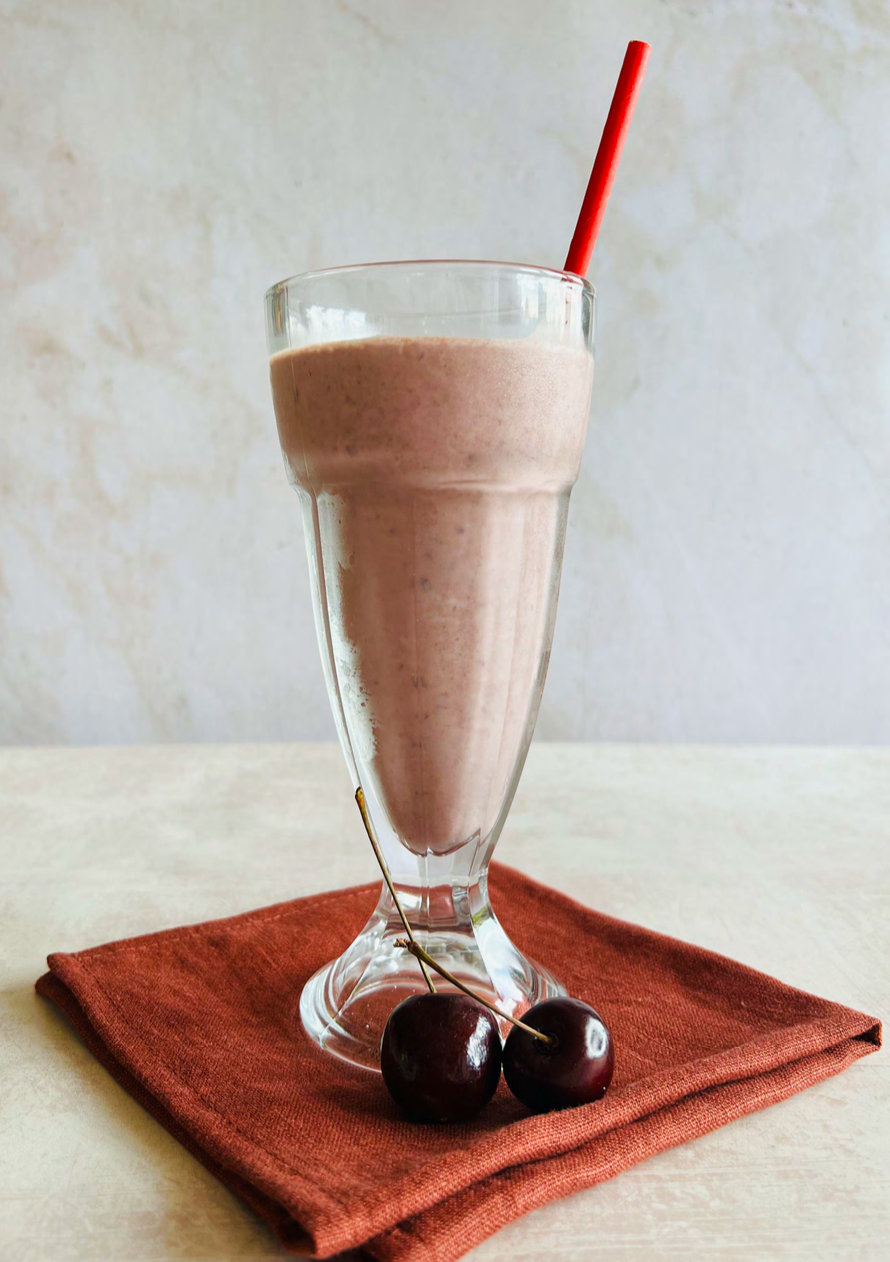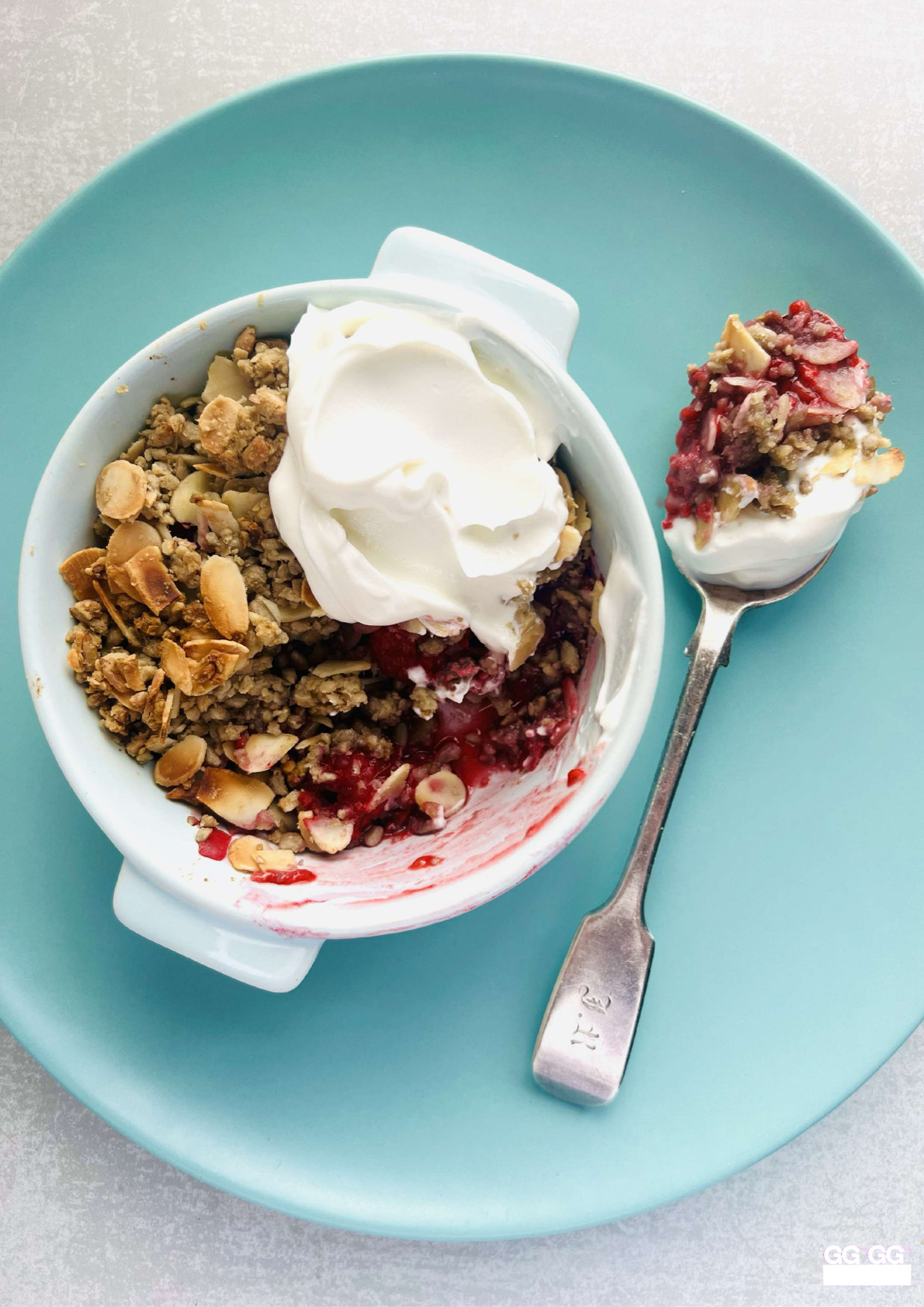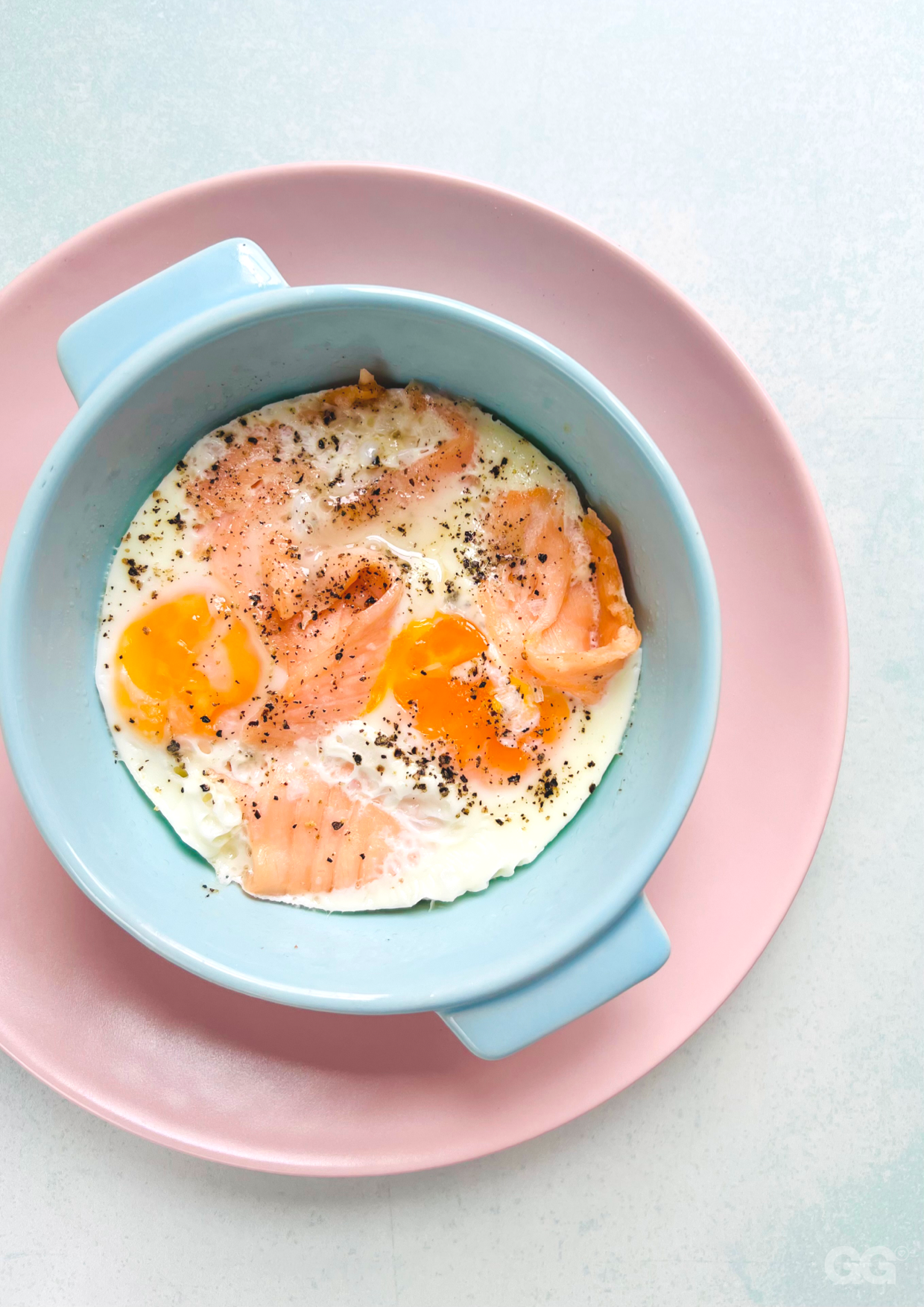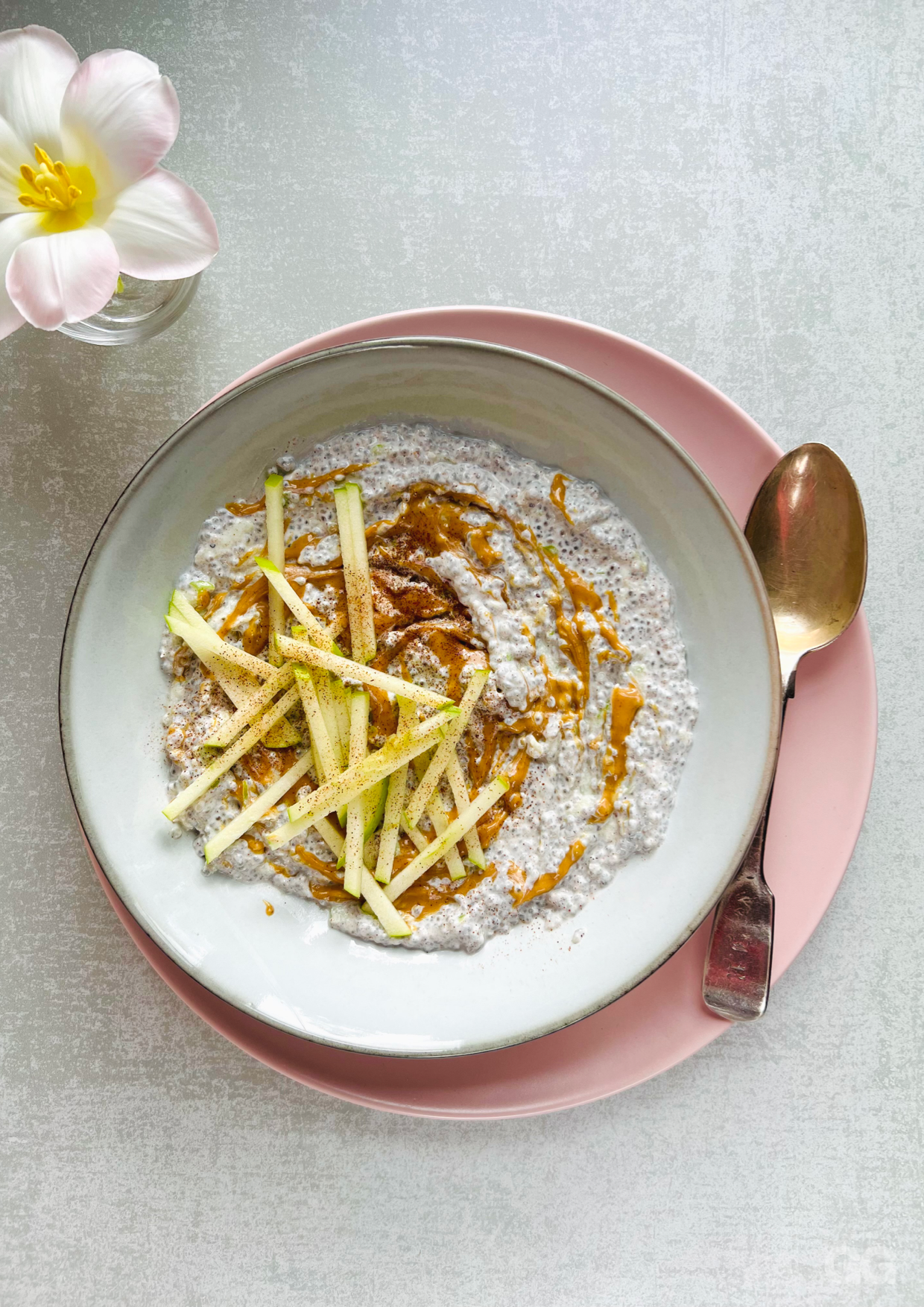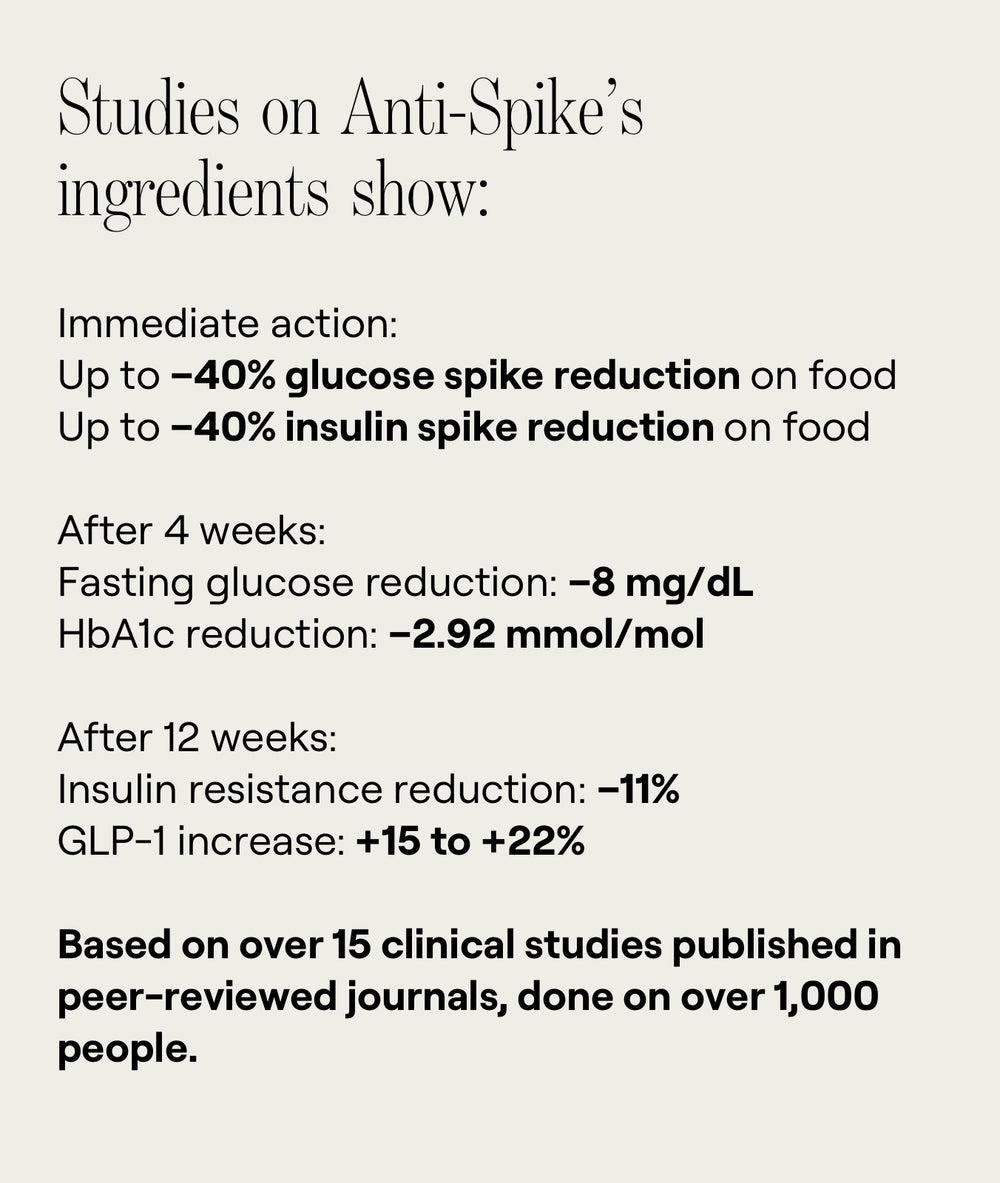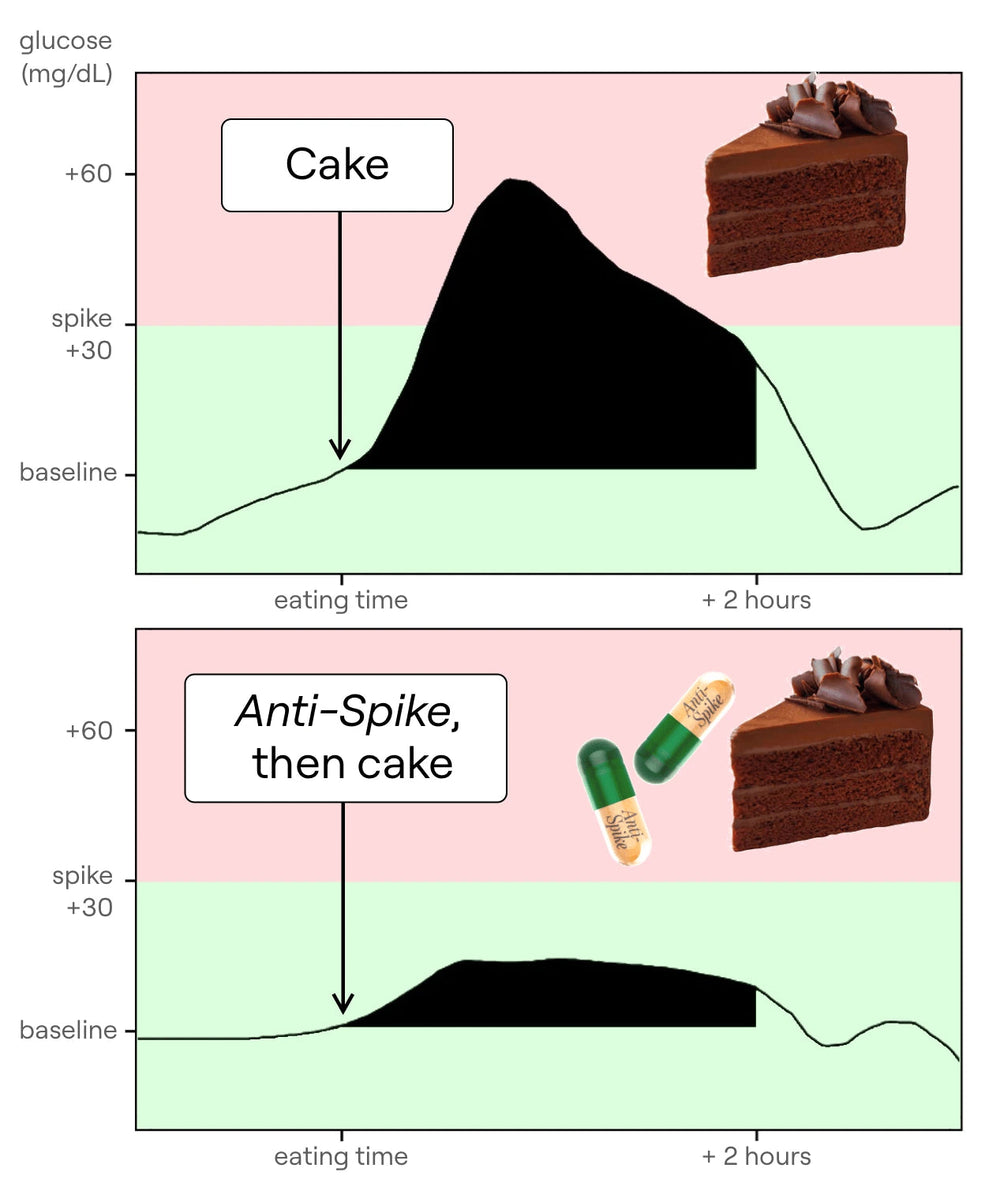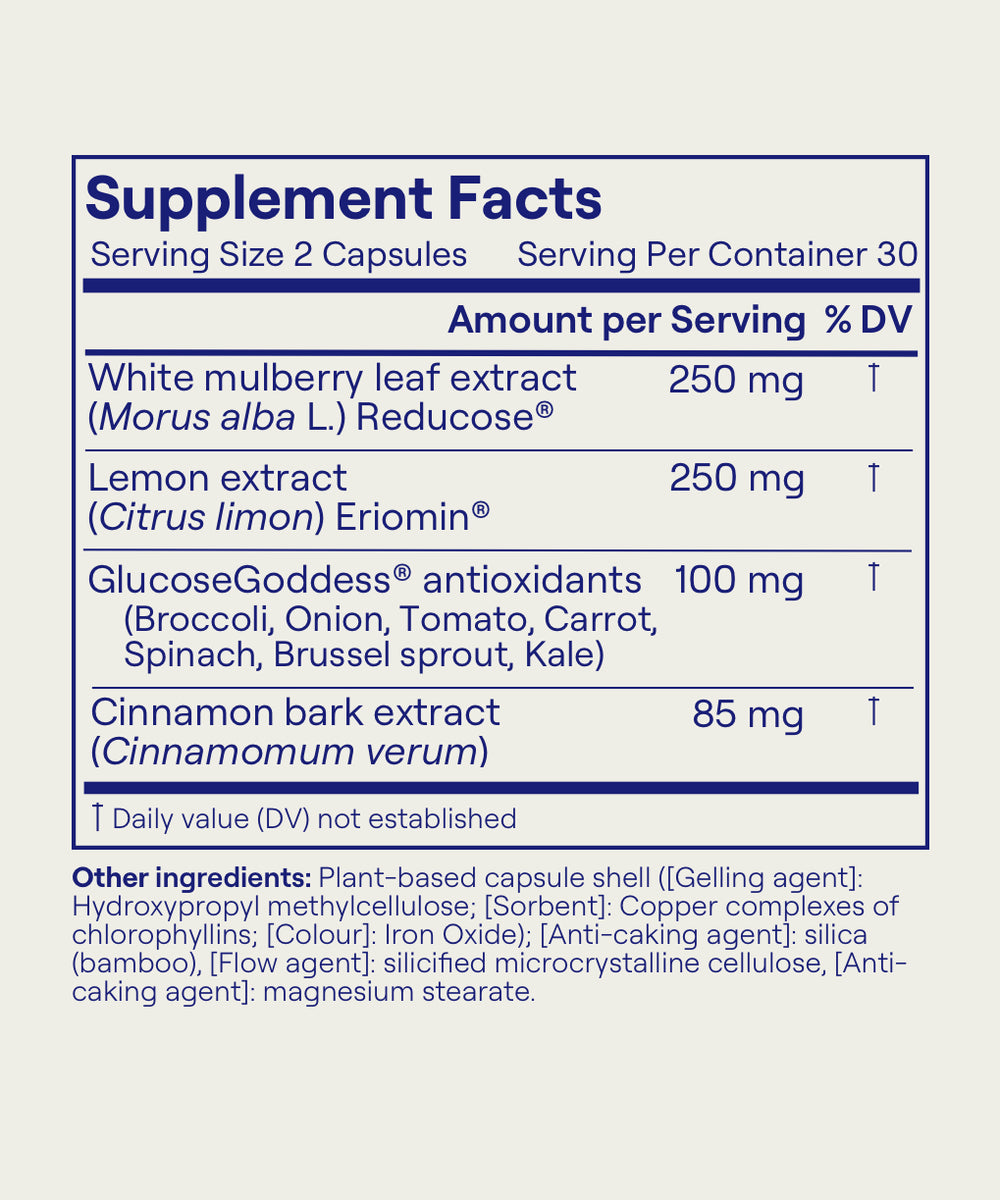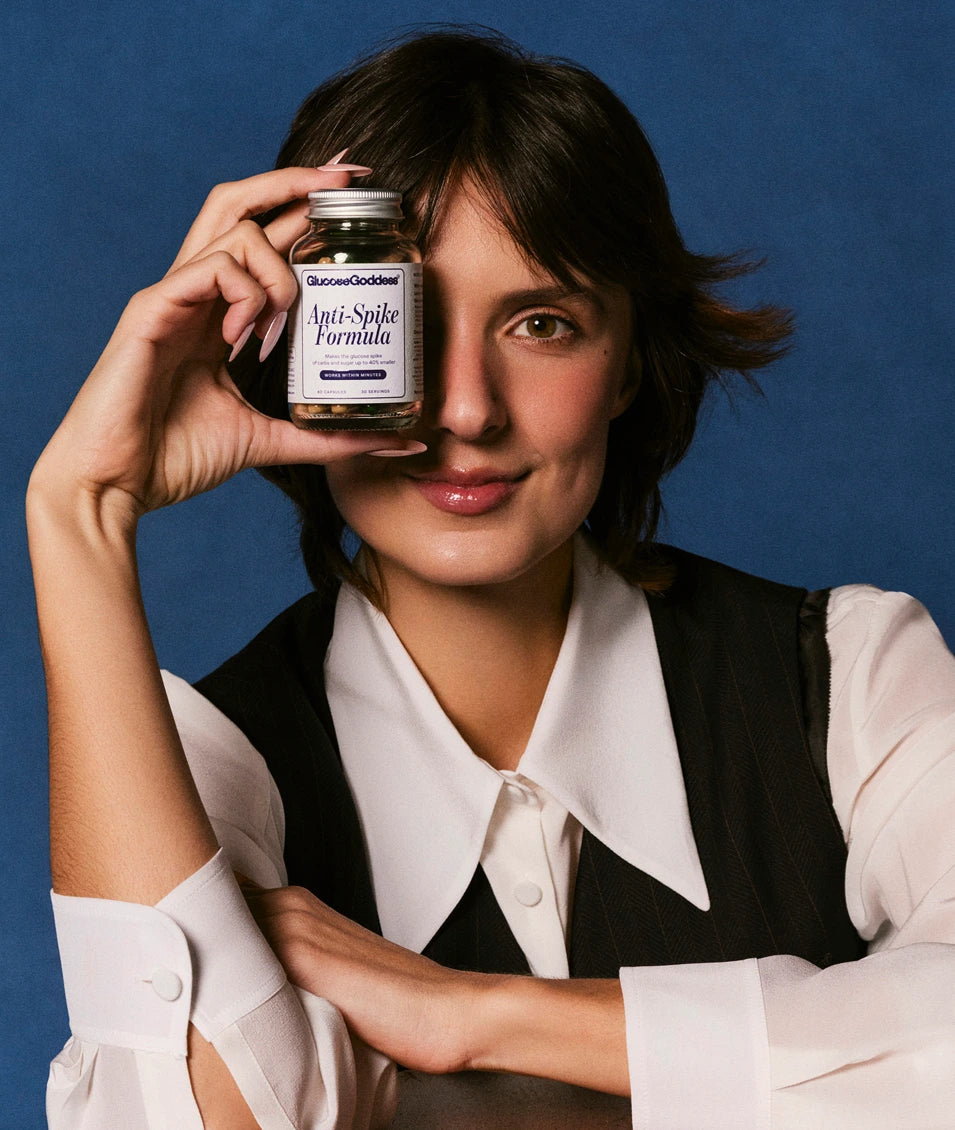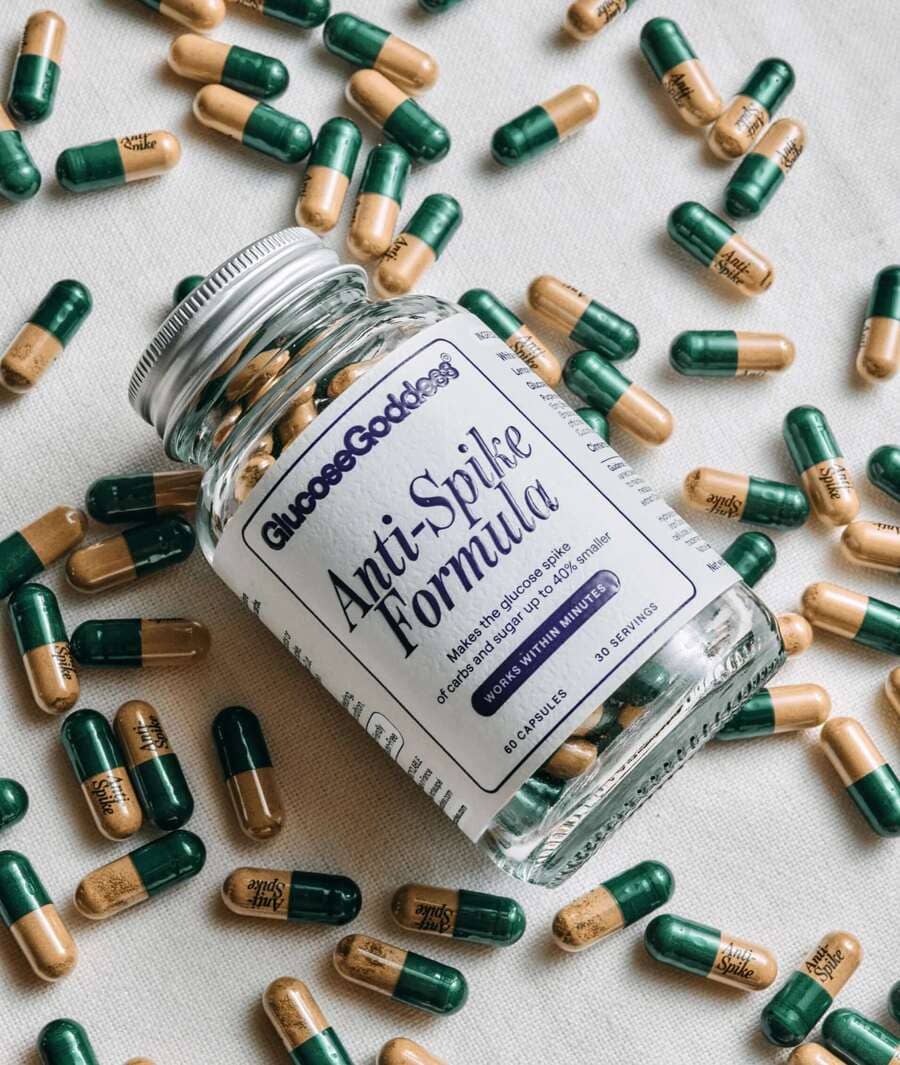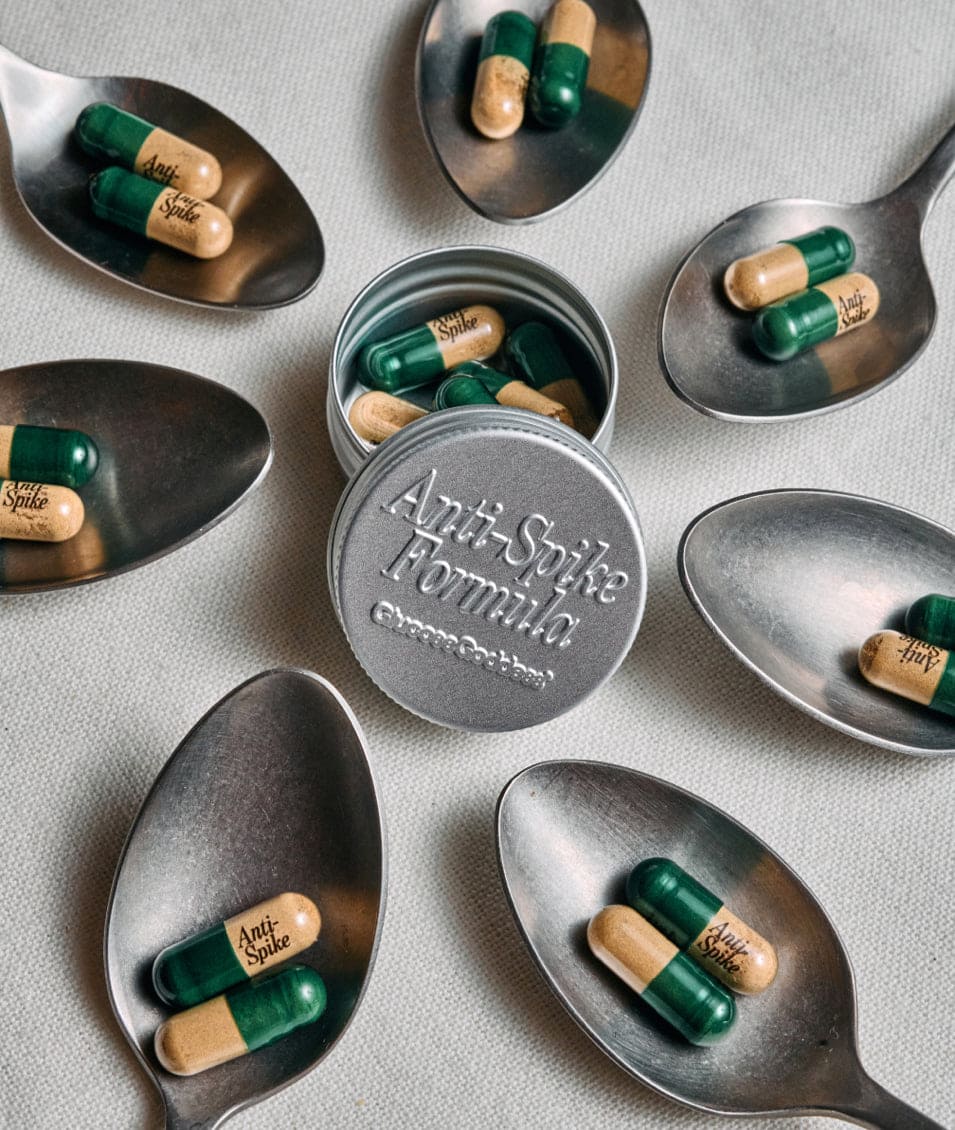SCIENCE EPISODE
Menopause Explained: Hormones, Glucose & What You Can Do
But here’s the great thing, my friends: there’s more and more research showing that you can actually change how severe your symptoms are with food.
Hello angels, and welcome back to the Glucose Goddess Show. My name is Jessie Inchauspé, I’m a French biochemist, and today I’m going to help you understand your body and your health, because science is my passion, and in today’s episode we are covering the very important topic of menopause.
For a long time menopause was just associated with “hot flashes, now you have brittle bones, and you’re useless”; that couldn’t be further from the truth. It’s really important that we dive into this fascinating topic that is going to affect, or already affects, so many of us.
As a female body ages, the ovaries slowly start producing and releasing fewer eggs and also start producing less of the female hormones estrogen and progesterone; this leads to periods becoming irregular and then eventually stopping. When your periods become irregular, you’re said to be in perimenopause, and once you haven’t had a period for one whole year, you are in postmenopause (or “menopaused,” if you will). The average age for menopause is 51 years old, and in 2030, one billion females in the world will be in peri- or postmenopause. There’s something really unique about humans: human females live for a very long time after going through menopause, and this is not the case in most animals; most animals die shortly after no longer being able to reproduce—or, put another way, most animals live their whole lives being able to reproduce—even animals who live much longer than humans. Humans are a very special case, and this is quite interesting: for instance, tortoises live to about 100 years old but never go through menopause; they can reproduce until about 100. Scientists have only discovered a few species of mammals that experience menopause and stay alive after no longer having periods and being able to reproduce, and these species are orca whales (killer whales), short-finned pilot whales, belugas, and—according to a groundbreaking 2023 study—wild chimpanzees. Humans have always lived fairly long; even in ancient times, many humans lived until about 60 years old. The average life expectancy was much lower because a lot of people died very young—there was a lot of infant death—but plenty of humans reached older ages, and females have been going through menopause forever and living past the age of being able to reproduce.
So why does menopause happen in humans? Time for a quick break to tell you about the supplements I have developed, Anti-Spike Formula. In my years of research I’ve understood one key thing: keeping our glucose levels steady is the foundation of physical and mental health, no question, and if you are currently going through peri- or postmenopause, this is going to be of interest to you because helping your glucose levels stay steady has been associated with fewer menopause symptoms. I created Anti-Spike with two really powerful natural plant molecules in it. The first is mulberry leaf extract: in a review of 12 randomized clinical trials on over 600 people, scientists found that mulberry leaf extract significantly reduces our glucose spikes after a meal by up to 40%, significantly reduces our insulin spike after a meal by up to 40%, and reduces fasting glucose levels by 8 mg/dL after just two months; this molecule reduces the absorption of glucose in our bloodstream and slows how quickly starches turn to glucose, therefore creating a massive reduction in the glucose spike of a meal. The second main molecule in Anti-Spike Formula is a molecule from lemon called eriocitrin; it’s the molecule that makes lemons yellow and it has a really cool effect on our gut—it helps our gut produce more GLP-1. Clinical trials show that GLP-1 production increases by 17% after just two months of taking it; more GLP-1 means healthier glucose levels. I take two capsules of Anti-Spike Formula every single day before the meal of my day highest in carbs and sugars; go to anti-spike.com to see all the science behind these ingredients, to see testimonials from thousands of people who’ve tried it, and to order your own Anti-Spike Formula bottle and try it for yourself.
Back to the question: scientists don’t really know why menopause happens—sorry, no definitive answer. What we do know is that men can reproduce until they die, but females can’t; to me this suggests there is a great advantage for human society to have females who can no longer reproduce, because they serve a very important function in human society. Remember this: menopause has been dismissed a lot, there’s taboo around it, and there’s a belief that after menopause you’re no longer useful; biology suggests the opposite—biology has favored having females who can no longer reproduce because they serve a vital role. Possibly; we don’t know for sure, but there’s definitely an advantage, otherwise females would die right after menopause—and that’s not the case. Still, there’s very little research on this topic; there’s stigma, and the belief that menopause is just hot flashes.
Actually there’s a lot more going on. I want to talk about a specific 2024 study, “Diet Quality Is Associated With Lower Prevalence of Menopausal Symptoms: The ZOE PREDICT 3 Study,” which showed that it’s not just hot flashes: there are many symptoms you can experience as you go through peri- and post-menopause. To name a few so you don’t feel alone: joint pain, thinning hair, dry skin, water retention, weight gain, slowed metabolism, fatigue, memory loss, brain fog, headaches, sleep disturbances, mood changes, anxiety, low mood, depression, irritability, vaginal dryness, loss of breast fullness, low libido, chills, night sweats, and finally hot flashes. Importantly, almost 100% of females had symptoms; 66% had more than 12 symptoms in perimenopause, and 41% had over 12 symptoms in post-menopause.
Let’s quickly talk about glucose levels, because there’s substantial evidence that in post-menopause our body cannot handle carbs as it used to. Carbs are starches (bread, rice, pasta, potatoes, oats) and sugars (anything sweet, from a slice of apple pie to a banana smoothie). The same carbs you ate before menopause now create bigger glucose spikes than before; without changing your diet you’ll experience bigger spikes for the same food. A large 2022 study of 1,000 women, “Menopause Is Associated With Postprandial Metabolism, Metabolic Health, and Lifestyle: The ZOE PREDICT Study,” found a 42% increased magnitude of glucose spikes for the same food. This is not based on age; it’s a hormonal shift. For example, the same cookie postmenopause can create a spike up to 42% bigger than before menopause. This sucks, because glucose spikes create symptoms—cravings, fatigue, bloating, inflammation, mood swings, potential weight gain—and they’ve been shown to increase brain fog by slowing information transfer between neurons. Many symptoms during peri- and postmenopause could actually be aggravated by glucose spikes.
What do we do? Start with glucose hacks. I have 10 very easy hacks that cost no money, don’t ask you to give up foods, and help reduce glucose spikes; if you’re in peri- or postmenopause, this is the perfect time to implement them to reduce symptoms, feel better, and reduce the risk of chronic diseases like heart disease and type 2 diabetes. To download them, click the link in the description of this episode (a one-pager PDF). A few briefly: savory breakfast; “put clothing on your carbs”; have vinegar once a day; start meals with veggies (lunch and dinner—harder at breakfast); never have sugar on an empty stomach (always after a meal); and move after eating. These can truly help alleviate symptoms. I also recommend supplementing with both mulberry leaf extract and lemon antioxidants—the perfect combo to reduce spikes: mulberry leaf reduces the spike of carbs by up to 40%, helping counteract peri- and post-menopause hormone shifts so that even without changing your diet you’ll see decreased spikes; the lemon antioxidant helps your body produce more GLP-1, reducing hunger and intense cravings.
Link in the description: the supplement is called Anti-Spike; it has the best sources of mulberry leaf and lemon antioxidants to help you on your journey.
Now, your adrenals: during menopause, the job of making female hormones switches from your ovaries to your adrenals—little glands above your kidneys. They now make (far less) female hormones and are also in charge of cortisol and adrenaline (stress hormones). Scientists hypothesize that lots of glucose spikes create stress (shown in studies), and with many spikes and drops your adrenals must release stress hormones; as a result, they’re less available to produce female hormones effectively, which could be one reason we see a link between more glucose spikes and more menopause symptoms. For instance, the study “Vasomotor Symptoms and Insulin Resistance in the Study of Women’s Health Across the Nation” showed that hot flashes and night sweats are more common in women with high glucose and high insulin levels. Again, connection. And remember the good news: you can change symptom severity with food. The study “High Glycemic Index and Glycemic Load Diets as Risk Factors for Insomnia: Analysis From the Women’s Health Initiative” showed that reducing spikes and flattening glucose curves is associated with fewer symptoms such as insomnia. The PREDICT study also shows symptoms can be alleviated when diet is changed; they measured about a 30% reduction in symptoms when diet is improved and glucose is rebalanced. So, if you’re in peri- or post-menopause and want to reduce symptoms, balance your glucose with my hacks—it’s a really good place to start; there’s a free PDF in the description. People who implement the hacks often feel better within one day; it can be very fast, and you don’t have to give up foods you love, but we do have to counteract that the same foods now cause bigger spikes.
Another hormone-related glucose fact: in females who still have a period, the luteal phase (right before your period) also sees bigger spikes for the same foods. One of my favorite examples from me: ice cream two days before my period (luteal phase) versus ice cream seven days after; in the luteal phase the spike is bigger, even with the exact same food. It’s not the same as menopause (luteal = rise in progesterone; menopause = crash in estrogen and progesterone), but we can infer that female hormones impact glucose spikes; in moments of life with bigger spikes for the same foods—before a period or in peri/postmenopause—it’s important to learn how to counteract symptoms. Let’s look at muscle and bone health in peri- and postmenopause. A key paper, “Mechanisms of Estrogen Influence on Skeletal Muscle Mass, Regeneration, and Mitochondrial Function,” shows that as we lose estrogen, muscle mass declines—bad for many reasons: with less muscle we’re less protected as we age; muscles are an organ of longevity; they help us manage carbs and sugars because the more muscle mass we have, the more capacity we have to put excess glucose away (perfect storage units). As you go through peri- and post-menopause you may see body composition change—less estrogen makes it harder to maintain or build muscle—and fat deposition often shifts from hips to belly. Lower estrogen also means lower bone density, making fractures more likely; with less muscle, you’re less protected.
As we age, breaking bones can really be the beginning of the end, so we want to counteract that. How? Two things. First, lift weights—three times a week. Don’t be scared; we’re not in the ’90s anymore doing only cardio. Go to the gym, pick up weights, learn proper movements, and build up (not one-pound dumbbells!): aim to biceps-curl 10 lb, squat 100 lb—lift heavier than you think. Second, weightlifting only works if you eat enough protein. Most of us don’t: we should eat about 1 gram of protein per pound of body weight per day. If I’m 150 lb, I should eat ~150 g/day; one egg is barely 7–8 g—that’s 20–25 eggs—so plan accordingly.
To help you start, there’s a free PDF in the episode description to calculate your daily protein (in pounds or kilos) and see lots of real foods with their protein amounts. Combine my glucose hacks, target ~40 g of protein per meal, lift weights, and your menopause symptoms will be tremendously helped.
Last topic: hormone replacement therapy. No episode on menopause would be complete without it. Here’s what the science suggests: transdermal hormones seem to be associated with fewer cardiovascular issues than pills—transitioning to transdermal hormones like patches seems better for health because some associations have been found between oral HRT and cardiovascular issues. Of course, discuss with your doctor, but using HRT is a great way to alleviate symptoms; see if you’re a candidate, and combine it with everything else to go through peri- and postmenopause feeling really good. That’s my plan—I’m only 32, but when I’m going through peri- and postmenopause, you can bet I’ll be doing all the hacks and lifting weights. We still need way more research on menopause—it’s heavily under-researched—but I hope we can continue the conversation and encourage scientists doing wonderful work on this topic.
If you’re going through peri- or post-menopause, download my hacks, try them out, and let me know; in a few days—and definitely in a couple of weeks—you’re likely to feel a great difference.
I hope it helps you. I’ll see you next time.
 Anti-Spike Supplement
Anti-Spike Supplement
 The Recipe Club
The Recipe Club
 Course
Course
 50 Breakfast Recipes
50 Breakfast Recipes
 50 Veggie Starter Recipes
50 Veggie Starter Recipes
 20 Vegan Recipes
20 Vegan Recipes
 20 Gluten-Free Recipes
20 Gluten-Free Recipes
 The 10 Glucose Hacks
The 10 Glucose Hacks
 Vinegar
Vinegar
 Alcohol
Alcohol
 Fasting
Fasting
 GLP-1
GLP-1
 What to Eat Before & After Exercise
What to Eat Before & After Exercise
 Protein
Protein
 PCOS
PCOS
 Menopause
Menopause
 My MRI Story
My MRI Story
 Breakfast
Breakfast
 Supplements
Supplements
 Clothes on Carbs
Clothes on Carbs
 Eggs & Cholesterol
Eggs & Cholesterol
 Chocolate
Chocolate
 Food Labels
Food Labels
 Veggie Starters
Veggie Starters
 Move After Eating
Move After Eating
 Why Glucose Matters
Why Glucose Matters
 Glucose Revolution Book
Glucose Revolution Book
 The Glucose Goddess Method Book
The Glucose Goddess Method Book





